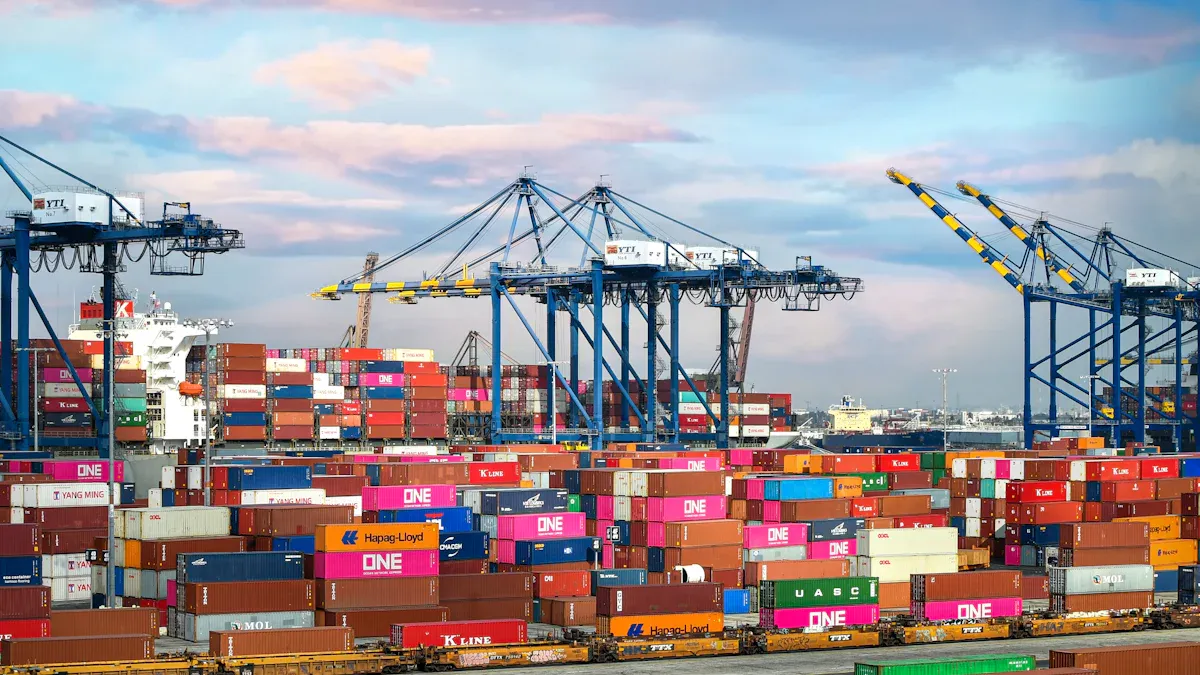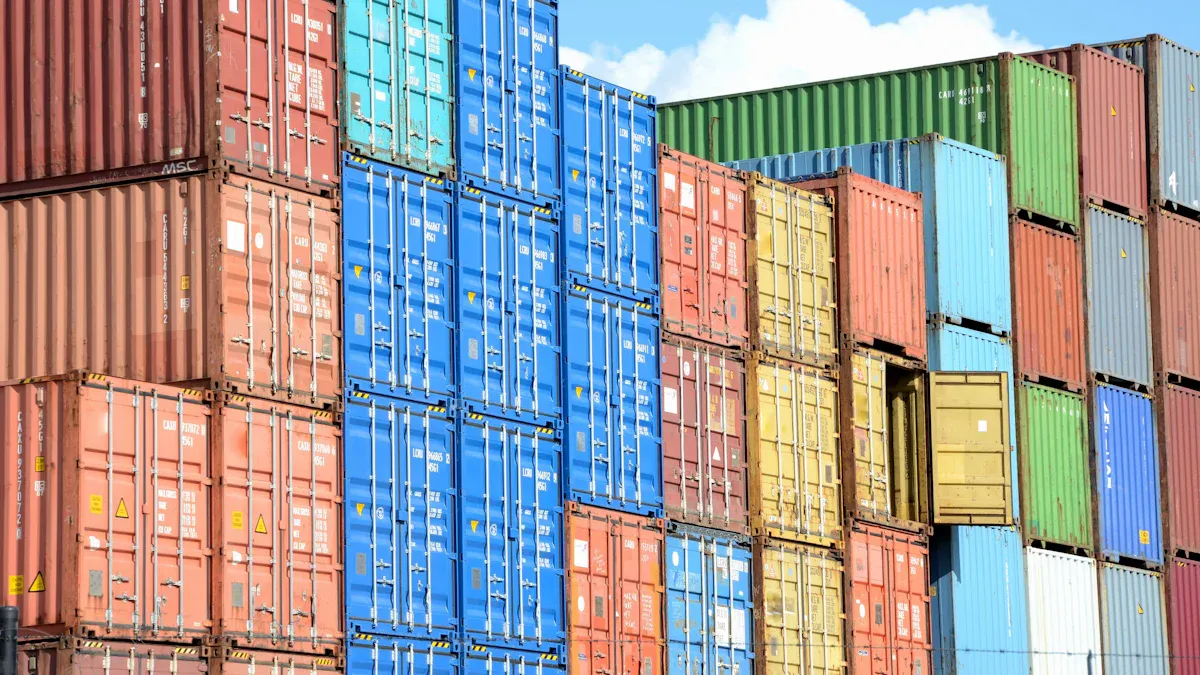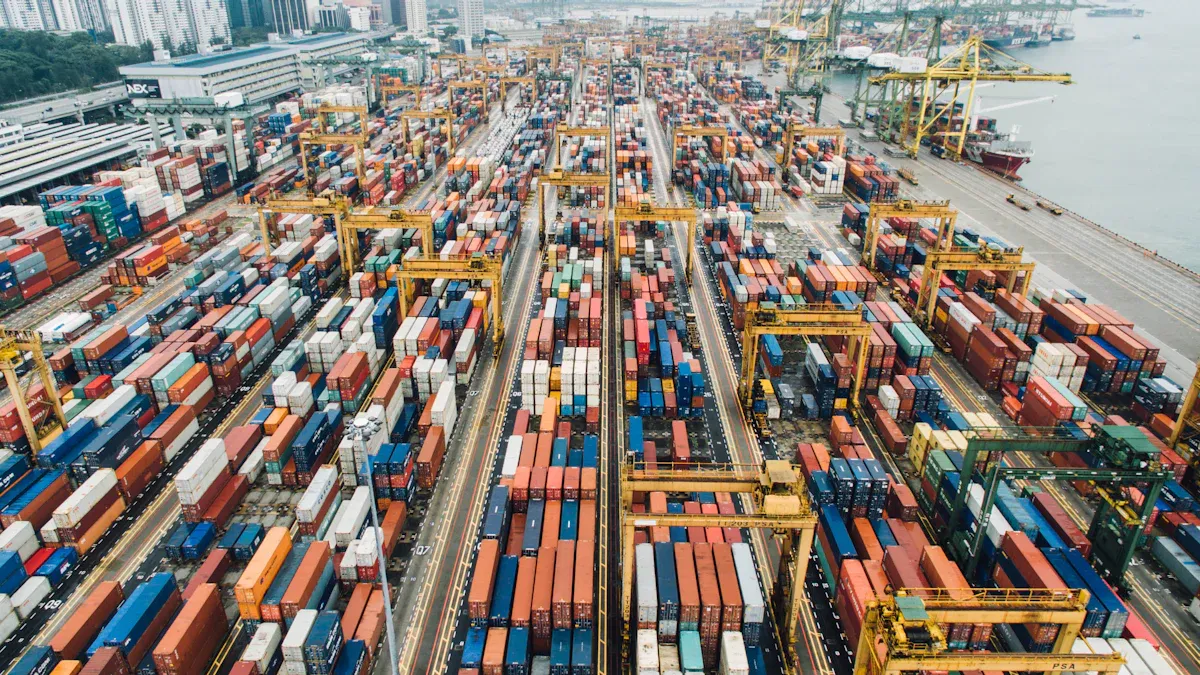How to Manage the Shipping Process When Importing Bulk Goods from China

Managing the shipping process is essential when importing bulk goods from China. You must navigate challenges like customs clearance, complex documentation, and logistics. Efficient management ensures cost-efficiency and timely delivery. Regulatory compliance is equally critical to avoid penalties and delays, making a proactive approach vital for success.
Key Takeaways
Check suppliers carefully to make sure products are good. Research them and visit factories to create a reliable supply chain.
Learn Incoterms to know who handles shipping tasks. Pick the right term based on your money and control needs to avoid surprise charges.
Plan your budget well to handle shipping costs. List all possible fees and use different carriers to save money.
Preparing for Shipping Bulk Goods from China

Verifying Suppliers and Ensuring Product Quality
Before importing goods from China, verifying your suppliers is essential to avoid potential risks. Start by conducting thorough research. Gather a list of potential suppliers and check their business licenses and certifications. This step ensures you work with legitimate and reliable partners. Visiting factories in person or hiring a local agency to audit them can provide valuable insights into their working conditions and quality control processes. Additionally, evaluate the supplier's production capacity and scalability to ensure they can meet your long-term needs. These steps will help you establish a trustworthy supply chain for importing goods.
Understanding Incoterms and Shipping Terms
Understanding Incoterms is critical when importing bulk goods from China. These international trade terms define the responsibilities of buyers and sellers during the shipping process. For example:
EXW (Ex-works) requires you to handle all costs and responsibilities from the supplier's warehouse.
FOB (Free on Board) transfers responsibility to you once the goods are loaded onto the vessel.
CIF (Cost, Insurance, and Freight) includes insurance and freight costs covered by the seller.
Choosing the right Incoterm depends on your budget, risk tolerance, and control preferences. Familiarizing yourself with these terms ensures you avoid unexpected costs and misunderstandings.
Budgeting for Shipping Costs and Fees
Accurate budgeting is crucial for managing the shipping process effectively. Shipping bulk goods from China involves various costs, such as base rates, fuel surcharges, and customs duties. For instance:
Cost Component | Description |
|---|---|
Base Rates | Calculated based on weight or volume of cargo. |
Terminal Handling Charges (THC) | Fees for handling containers at the terminal. |
Customs Duties and Taxes | Varies based on goods type, value, and regulations. |
To avoid hidden fees, measure cargo weight accurately and understand freight classes. Diversifying carriers can also help you find cost-effective options. Recognizing customer expectations will guide your budget planning and ensure smooth importing of products. |
Choosing the Right Shipping Method for Importing from China

Comparing Sea Freight and Air Freight Options
Choosing between sea freight and air freight depends on your priorities, such as cost, speed, and environmental impact. Sea freight is often the most economical choice for bulk shipments. It offers lower rates due to reduced fuel consumption per unit of cargo and is ideal for non-urgent deliveries. Additionally, sea freight has a smaller carbon footprint, emitting significantly less CO2 compared to air freight. However, it requires longer transit times, which may not suit time-sensitive goods.
Air freight, on the other hand, provides unmatched speed, making it the preferred option for urgent shipments. It ensures reliable delivery for temperature-sensitive or high-value goods. Despite its higher costs, air freight offers flexibility for smaller shipments that need to reach their destination quickly. When deciding, consider the nature of your goods, their value, and how quickly they need to arrive.
Evaluating Cost, Speed, and Volume for Shipping
Cost, speed, and volume play a critical role in determining the best shipping method. For large, non-urgent shipments, sea freight is the most cost-effective option. It allows you to distribute shipping costs over a larger volume, keeping rates low. While slower, it avoids the premium charges associated with faster methods.
Air freight strikes a balance between speed and cost for medium-sized shipments. It is ideal for goods that are time-sensitive but do not justify the expense of courier services. By evaluating these factors, you can choose a method that aligns with your budget and delivery timeline.
Exploring Alternative Shipping Methods (e.g., Rail or Courier Services)
Alternative shipping methods like rail freight or courier services can also meet your needs. Rail freight is a cost-effective and environmentally friendly option for transporting heavy goods over long distances. It offers predictable pricing, high security, and reduced fuel consumption. Trains can carry larger volumes, making them suitable for bulk shipments.
Courier services, while more expensive, provide unmatched speed and convenience for smaller, high-priority shipments. They are ideal for delivering goods directly to your customers or warehouses. By exploring these alternatives, you can diversify your shipping strategy and optimize costs.
Documentation and Customs Clearance for Shipping from China to USA
Preparing Essential Documents (Bill of Lading, Commercial Invoice, Packing List)
Accurate and complete documentation is the foundation of a smooth customs clearance process. When shipping from China to the USA, you must prepare several essential documents:
Bill of Lading (BOL): Confirms receipt of goods and outlines transport terms.
Packing List: Details shipment dimensions, weight, and itemized contents.
Commercial Invoice: Serves as proof of sale, listing item descriptions and values.
Certificate of Origin (COO): Certifies the manufacturing country of the goods.
Letter of Credit (LC): Ensures secure payment upon meeting shipment terms.
Shortcuts in compliance can lead to shipment risks, such as customs inspections or importation delays. Conduct pre-shipment reviews to ensure all paperwork is accurate and complete. Providing precise descriptions of goods to your forwarder or broker will also help avoid unnecessary complications.
Navigating Customs Requirements and Import Duties
Understanding customs procedures is critical for shipping from China to the USA. You must meet specific requirements, including:
Required Documentation: Submit the Commercial Invoice, Bill of Lading, Packing List, and Entry Summary.
Customs Bonds: Secure a financial guarantee, either single-entry or continuous, for customs clearance.
Import Duties and Taxes: Calculate these based on commodity codes and shipment value. For example, electronics may incur a 5% tariff, while textiles could face higher rates.
Delays often stem from incomplete or incorrect documentation. Stay informed about customs regulations and classify goods accurately to manage costs effectively. Partnering with experts can help you comply with import regulations and avoid penalties.
Working with Customs Brokers for Smooth Clearance
Customs brokers play a vital role in simplifying the customs clearance process. They help secure permits and licenses, assess risks, and act as liaisons between you and customs officials. A reliable broker ensures compliance with customs procedures and provides ongoing support, such as audits and compliance reviews.
To select the right broker:
Look for a proven track record and industry-specific experience.
Ensure they are licensed and cover all ports of entry.
Choose brokers who use advanced technology for shipment tracking.
Verify their reputation for clear communication and transparent fees.
By working with a knowledgeable broker, you can streamline the international shipping process and focus on growing your business.
Risk Management in Importing Bulk Goods
Securing Insurance for Shipments
Insurance protects your shipments from potential risks during transit. Choosing the right policy depends on the type of goods you are importing and the risks involved. Here are common types of insurance and their coverage:
Insurance Type | Coverage Description |
|---|---|
All-Risk Insurance | Covers most shipping risks, including damage, loss, theft, and unforeseen events. |
Total Loss Insurance | Provides recovery only when the entire shipment is lost or destroyed. |
Specific Peril Insurance | Covers only the risks defined in the agreement, such as theft, damage, or fire. |
When selecting an insurance policy, consider these factors:
Assess the nature of your goods to identify potential risks.
Review policy terms to ensure adequate coverage.
Choose a reputable insurer with expertise in freight insurance.
Compare multiple options to balance cost and coverage.
By securing the right insurance, you can safeguard your shipments and minimize financial losses.
Conducting Pre-Shipment Inspections
Pre-shipment inspections ensure your goods meet quality standards before leaving the manufacturer. This step helps you avoid costly issues and delays. Key benefits include:
Ensuring compliance with regulations to prevent fines.
Verifying product quality to build trust with suppliers.
Identifying defects early to save time and money.
Effective inspection methods include using checklists to verify product specifications and hiring independent inspectors to oversee quality. These practices reduce risks and protect your brand reputation.
Strategies to Avoid Delays and Losses
Delays and losses can disrupt your supply chain. To prevent these issues, implement the following strategies:
Diversify shipping routes to reduce dependency on a single pathway.
Build buffer time into schedules to account for unforeseen delays.
Monitor weather forecasts and adjust routes proactively.
Double-check documentation to avoid customs hold-ups.
Maintain strong relationships with port authorities for priority access.
By optimizing your shipping process, you can ensure timely delivery and minimize risks.
Managing the shipping process effectively ensures successful importing. Focus on key steps like choosing the right shipping method, understanding Incoterms, and optimizing costs. Build strong supplier relationships and monitor shipments in real-time. Stay proactive by preparing for customs, conducting inspections, and maintaining contingency plans. These strategies improve efficiency, reduce risks, and ensure timely delivery.
FAQ
What is the best shipping method for importing from China?
The best method depends on your priorities. Use sea freight for cost savings on bulk goods. Choose air freight for faster delivery of time-sensitive shipments.
How can you reduce costs when importing from China?
Negotiate with suppliers for better rates. Consolidate shipments to save on freight costs. Work with customs brokers to avoid unexpected fees.
Do you need a customs broker for importing from China?
A customs broker simplifies the process. They ensure compliance with regulations, handle documentation, and help you avoid delays or penalties during customs clearance.
See Also
Effective Techniques for Negotiating with Wholesale Suppliers
Comprehensive Tips for Importing Wholesale Flashlights from China
Expert Strategies for Acquiring Wholesale Bicycle Lights
About US
Follow Us
Hello,Friend,
I am Mary from Helius, we are manufacturer of LED lighting products with more than a decade of experiences.
We offer hot selling products in market and guarantee the quality with competitive cost.
Let’s have more discussion on your inquiry.
Or you can reach out me via what’s up/tele gram +8618123952945 if it’s favorable to you.
Address
4th Floor, Building A16, Intelligent terminal industrial park of Silicon Valley, Dafu Industrial Zone,Guanlan, Shenzhen, 518110 China
Contacts
mary@heliuslights.com
heliuslight04@hotmail.com
+0086 18123952945
